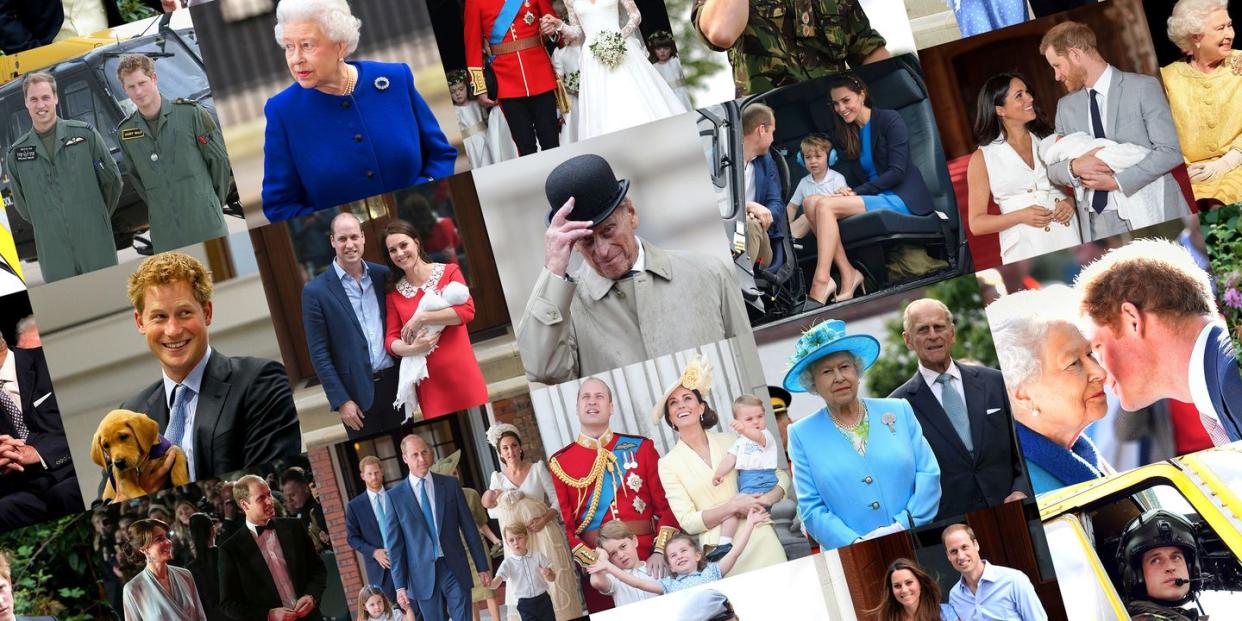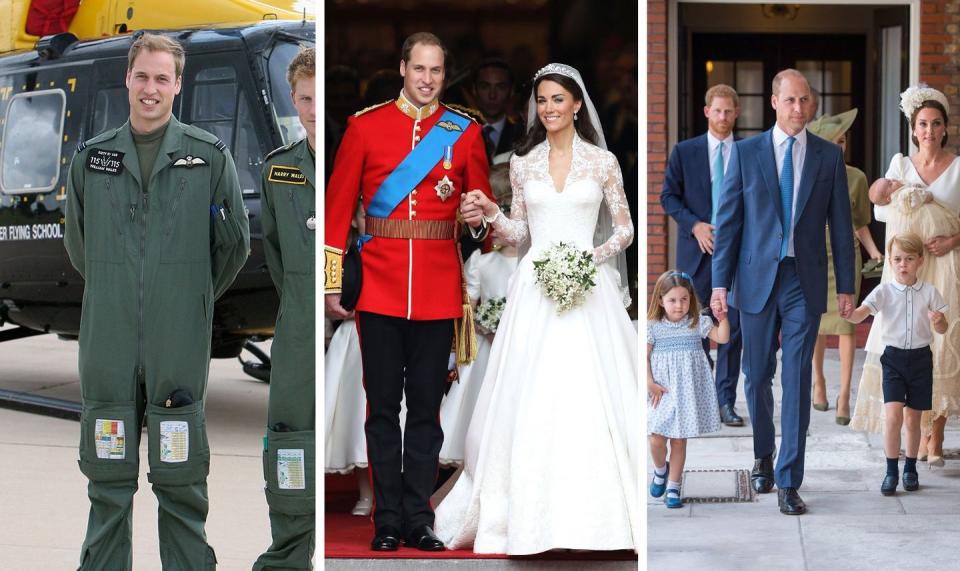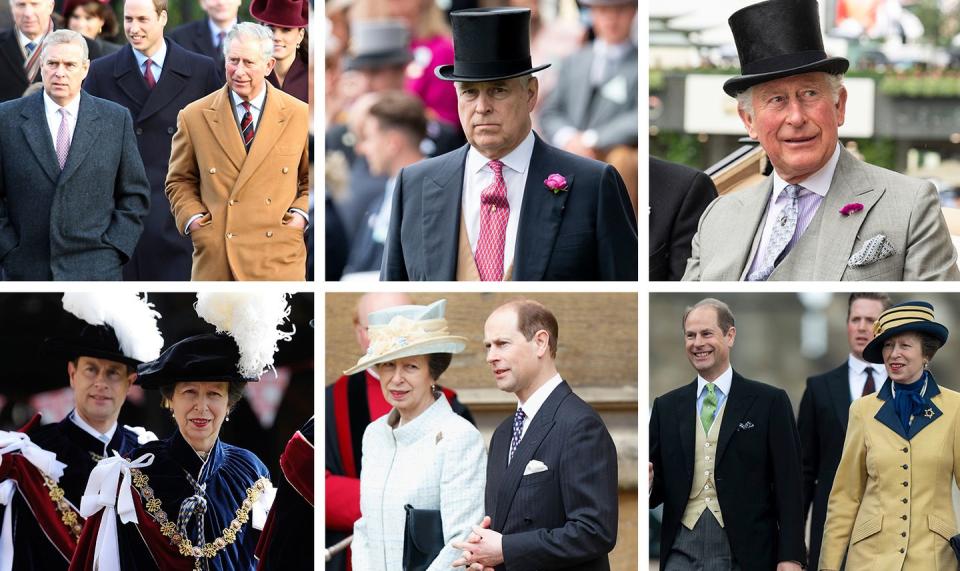For the Royal Family, the 2010s Were a Decade of Seismic Change

For an institution that has been around for centuries, a decade may not seem like such a long time. But for Britain’s royal family, the 2010s have brought about a remarkable transformation.
At the end of 2009, William and Kate were not yet engaged and Prince Harry was in the fledgeling years of his career as an Army Air Corps pilot. Prince Philip was still traveling the world on official engagements and the now-infamous picture showing Prince Andrew with his arm around Virginia Roberts had yet to be published.
Fast forward to the end of 2019 and the Duke and Duchess of Cambridge run their own charitable foundation from their court at Kensington Palace where they live with their three children. Harry and his wife Meghan have a separate royal household, foundation, and a home in Windsor with baby Archie. Prince Philip has not been seen in public for several months after retiring in August 2017. And controversy surrounding Prince Andrew led to his unprecedented exit from public life.

Just as the prince’s engagements stopped suddenly, so too did activity on his Twitter account @TheDukeOfYork—its very existence emblematic of how the last decade has transformed the way the royals communicate with the world. The Queen has always acknowledged that the monarchy must adapt and modernize in order to remain relevant, but perhaps no one could have predicted quite how fervently and rapidly members of this ancient institution would embrace the digital age.
The Queen joined Twitter in 2009, Facebook in 2010, and now every royal household (Buckingham Palace, Clarence House, Kensington Palace, and the Sussexes) has its own non-stop social media operation. From videos and images of official engagements to posts offering historical and behind-the-scenes insight, this direct line to the public is now central to their communication strategy.
These accounts have documented a decade filled with milestones. Two massive royal weddings—the Cambridges’ in 2011 and Sussexes’ in 2018—generated interest around the world along with subsequent royal births. Philip turned 90 in June 2011, the Queen marked the same birthday in April 2016, and her son and heir Prince Charles turned 70 in November 2018.
The Queen’s Diamond Jubilee—the 60th anniversary of her accession to the throne—was celebrated in 2012 and history was made in September 2015 when she overtook Queen Victoria to become Britain’s longest-reigning monarch. Describing the accolade as “not one to which I have ever aspired,” the Queen also made the matter-of-fact point that “a long life can pass by many milestones.”

The Queen's words are a tacit acknowledgement of another pressing concern for the monarchy: Now a woman in her 90s, the sovereign cannot sustain the same workload forever.
At the beginning of the decade, this was not an easy subject to broach with royal staff. There were occasional questions about whether the Queen might begin to do less. “Does this look like a scaled down program?” I recall one senior aide saying during a briefing when the Queen was in her late 80s.
Today, the conversation is very different. Buckingham Palace announced in 2013 that the Queen’s long-haul travel was being reviewed. She has only made a handful of short trips since, and she is unlikely to ever again visit the 15 countries outside of the UK where she remains Head of State.
Prince Charles has laid the nation’s wreath on her behalf at the Cenotaph since 2017 and the sovereign has not worn the heavy Imperial State Crown for the State Opening of Parliament since 2016.
The Queen made it clear in a now world-famous speech when she was just 21 that she will devote herself to service for her “whole life.” But preparations for a smooth transition towards the next reign are now more evident than ever.
That said, a senior aide made it clear to T&C that there are "no plans" for a regency, where someone rules on the Queen's behalf, and "no plans for a transfer of power at 95 or any other age."

Prince Charles himself is now 71—an age when many have retired—but he is showing no signs of slowing down, consistently carrying out around 500 engagements per year. This includes multiple overseas trips as the most senior royal now touring abroad. He and wife Camilla have accompanied the Queen to the State Opening of Parliament since 2013.
A 2018 vote at Windsor Castle saw Charles secure the—non hereditary—position as the next Head of the Commonwealth. Before that, he had already stepped in to represent his mother at the biannual Commonwealth Heads of Government Meeting. In a BBC interview for his 70th birthday, the Prince answered questions about what kind of king he will be, moving to shut down suggestions he may be a “campaigning” monarch with an abrupt: “I’m not that stupid.”
As we prepare to begin the ’20s, much of the spotlight is already on the younger royals, now fully established as working members of “the firm.”
Prince William and Kate may have briefly made Norfolk their home base after Prince George was born in 2013, but the Cambridges shifted their focus back toward the capital and stepped up their royal duties once it was time for him to attend school. William is now a regular on the investiture roster and is learning about the large and complex Duchy of Cornwall estate, which he will inherit when his father becomes king.
For William and Kate, the future is mapped out. The path that Harry and Meghan will take remains less clear. The couple, currently on a break from royal duties, have already demonstrated a strong desire to do things their own way. Their immediate focus is the Sussex Royal foundation. Key to their strategy is their Instagram account, @SussexRoyal, which they use not just to highlight their own work, but also to show support for charities around the world.

A blueprint has now been set for this world-famous monarchy in the digital age, and as we enter 2020, the royals will no doubt be thinking all the more about the benefits and pitfalls of the internet. Their state-of-the-art website is now also an archive for milestones past, immortalizing the text of many historical speeches. Among them is the now famous dedication to service made by then-Princess Elizabeth on her 21st birthday in 1947.
That part of the speech in which the future Queen said "I declare before you all that my whole life, whether it be long or short, shall be devoted to your service and the service of our great imperial family to which we all belong," is by now well-known. But other, less quoted passages have just as much relevance as we enter the eighth decade of Elizabeth's reign. “This is a happy day for me," she said of her milestone birthday, “but it is also one that brings serious thoughts, thoughts of life looming ahead with all its challenges and with all its opportunity.”
You Might Also Like
